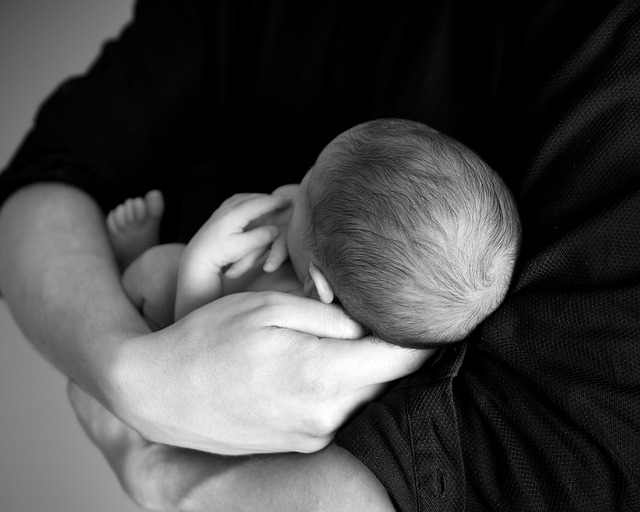The safety of homebirth has been much discussed in the birth community over the last few months following the publication of a study in the New England Journal of Medicine at the end of 2015. At the upcoming DONA International Annual Conference, Dr. Michael Klein, a Family Physician, pediatrician, and neonatologist who has delivered more than 2000 babies during his 30 year career will speak on this very important topic. Dr. Klein has not only expertise and experience to bring to the conversation on the safety of homebirth, but also a unique perspective to share. He has worked alongside midwives for over three decades, is both an American and a Canadian, served as a member of the British Columbia Midwifery Implementation Committee that oversaw the integration of midwifery into regulated practice and is one of the researchers that studied five years of outcomes of all home births in British Columbia. Here he shares some of this thoughts on the NEJM study and the safety of homebirth in general. His session at the 2016 Annual Conference is one not to be missed! – Adrianne Gordon, CD(DONA), MBA, Blog Manager
Our five-year British Columbia study has conclusively demonstrated the safety of home birth, such that the College of Physicians and Surgeons of British Columbia have rescinded their long-time ban on physicians working with midwives in home birth. Similar studies from Ontario, including the most recent study just published in the Canadian Medical Association Journal, continue to show home birth to be safe. (2,3) In all Canadian studies and several US studies, women experiencing out-of-hospital birth received dramatically fewer interventions, including caesarean sections, than their counterparts giving birth in hospital — leading to fewer complications in the present and future pregnancies.
Why the controversy?
The controversial New England Journal of Medicine study is limited in what it can tell us. It is a high level look at outcomes by planned birth site. Such an analysis cannot and does not claim to allow us to know what was actually going on. We can only say that something was going on between the births in the two main outcome categories. Looking at the case reviews from 2012, and assuming a similar result for 2013, I find that a total of eight cases of perinatal death occurred in the planned out of hospital (OOH) category. It was on the basis of this very small number of cases that the statement was made that the number of perinatal deaths occurred in the OOH group compared to hospital (similar to 2012-13).
The review also shows that some of the women planning OOH births clearly rejected conventional screening or had conditions incompatible with appropriate home birth criteria. With such a small number of cases, it is impossible to know if the outcomes of interest are due to care, system issues, certification or licensure of attendants or a combination of these factors. Regardless of licensure or certification, midwives like doctors, will have variable skills and judgement. I do not see how it is possible to make a judgement on the quality of care provided by various types of midwives, based on such small numbers.
What should a woman planning home birth know?
Doulas in the U.S., Canada and elsewhere need to know the basic information about the conditions for a potentially safe home birth. In the U.S., I would say that when thinking about a home birth or OOH birth a woman needs to ask the chosen provider:
1. How much training and experience does she have and in what settings and under whose mentorship did she acquire that experience?
2. What are her relationships with her backup system and receiving physicians? (Will her backup supports receive her consultation or transfer easily and without judgement)
3. How often does she require transfer for her clients? (It ought to be 15-20% for various reasons)
4. How quickly can she effect transfer should transfer be needed?
The answers to these questions will help women decide if OOH birth is a reasonable and potentially safe decision. Doulas, while not responsible for the birth, nevertheless need to be up to date with the home birth data and appreciate local conditions that may or may not be appropriate for a safe home birth.
And home birth saves money too
.All studies that have looked at the costs of home birth vs hospital conclude that home birth is substantially less expensive for the system. (5)
It is critical that those choosing to deliver outside of the hospital or birth center are attended by qualified providers, who must have minimum educational requirements, performance standards, and professional accountability.
 About the Author
About the Author
Michael C. Klein MD, CCFP, FAAP (Neonatal/Perinatal), FCPS, ABFP
Professor Emeritus, Departments of Family Practice and Pediatrics
Senior Scientist Emeritus BC Child and Family Research Institute
Centre Developmental Neurosciences & Child Health
Children’s and Women’s Health Centre of British Columbia
References
- Janssen PA, Saxell L, Page LA, Klein MC, Liston RM, Lee SK, et al. Outcomes of planned home birth with registered midwife versus planned hospital birth with midwife or physician. CMAJ Canadian Medical Association Journal 2009;181(6-7):377-83
- Hutton EK; Reitsma AH; Kaufman K. Outcomes associated with planned home and planned hospital births in low-risk women attended by midwives in Ontario, Canada, 2003-2006: a retrospective cohort study. Birth. 36(3):180-9, 2009 Sep.
- Hutton EK, Capaletti A, Reitsma A, et al Outcomes associated with planned place of birth among women with low-risk pregnancies CMAJDecember 22, 2015 First published December 22, 2015, doi:10.1503/cmaj.150564
- Snowden JM Ph.D. Tilden E, Snyder J et al. Planned Out-of-Hospital Birth and Birth Outcomes. New England Journal of Medicine. 2015;373:2642-53. DOI: 10.1056/NEJMsa1501738
- Janssen PA, Mitton C, Aghajanian J (2015) Costs of Planned Home vs. Hospital Birth in British Columbia Attended by Registered Midwives and Physicians. PLoS ONE 10(7): e0133524. doi:10.1371/journal.pone.0133524


